Hidden details you need to know to choose the ideal phone [ENG/SPA]
hive-106817·@danielcarrerag·
0.000 HBDHidden details you need to know to choose the ideal phone [ENG/SPA]
<div class=text-justify> Changing phones can be a challenge. The question some might ask is, "Which phone should I buy?" There will be those who have this very clear because they've used a certain brand for years, or advertising has helped them choose a model. However, there are people like me who are more detail-oriented and dig deep to know what to choose based on the price-quality ratio. So, if you're like me and don't know which phone to choose, this post is for you. I'm sharing some tips on what features to look for in a phone that no one mentions. >#### Detalles ocultos que debes conocer para escoger el teléfono ideal >Cambiar de teléfono puede resultar un desafío, la pregunta que algunos puede que se hagan es ¿que teléfono comprar? Habrá quienes tengan esto muy claro porque usan cierta marca desde hace años, o la publicidad los ha ayudado a escoger algún modelo, sin embargo, hay personas como yo que somos más detallistas y vamos a fondo para saber que escoger basado en la relación precio calidad, entonces si eres como yo y no sabes que telefono escoger, esta publicación es para ti, te comparto algunos tips sobre que características buscar en un teléfonos que nadie menciona. <center> 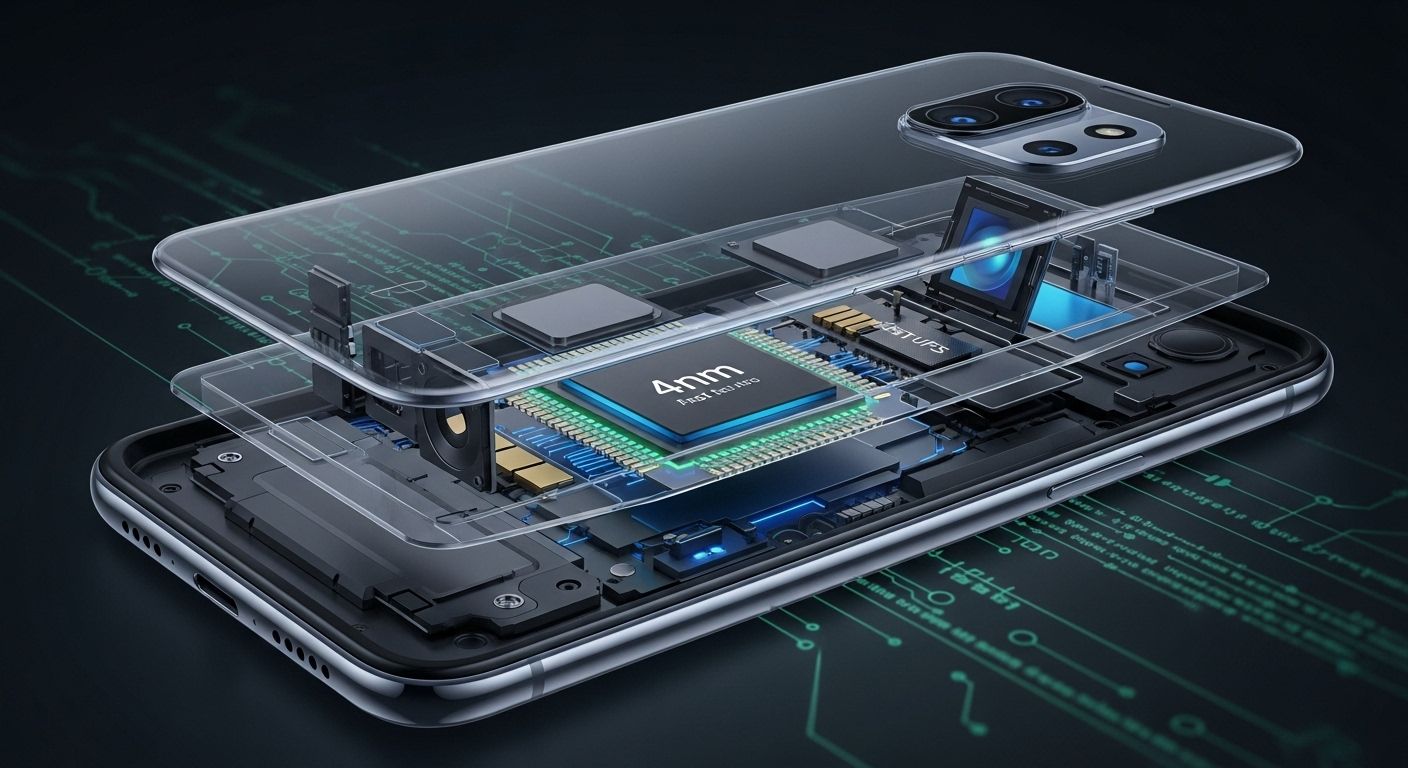 </center> I'm making this post because my current phone is already 6 years old, its operating system version is starting to become outdated, and it's showing hardware failures. Since so many years have passed since I bought a phone, I'm very out of date, which is why I started researching. Everyone who recommends phones talks about camera megapixels, fast charging, FPS, screen refresh rate, storage, RAM, and the processor, but each of these aspects becomes irrelevant when the components used for manufacturing are not of the best quality. >Hago esta publicación porque mi teléfono actual ya tiene 6 años, su versión de sistema operativo está comenzando a quedar desfasada y presenta fallas de hardware. Como han pasado tantos años desde que compre un telefono, estoy muy desactualizado, por eso comencé a investigar. Todos los que recomiendan teléfonos te hablan de los megapíxeles de las cámaras, la carga rápida, los fps, la tasa de refrescamiento de la pantalla, su almacenamiento, la RAM y el procesador, pero cada uno de estos aspectos dejan de ser relevantes cuando los componentes usados para la fabricación no son de la mejor calidad. *** #### Processor nanometers do matter <center> 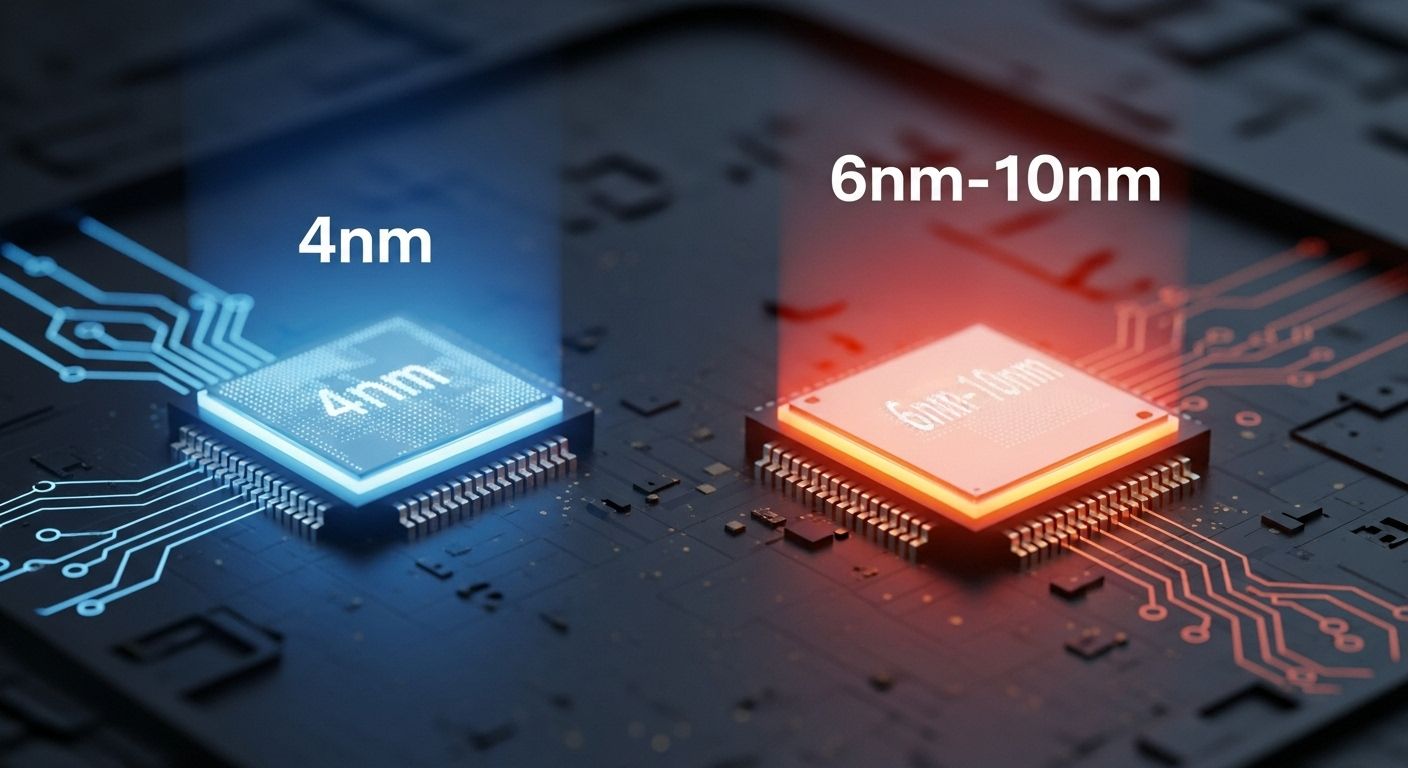 </center> You've probably had a phone or heard from someone that their phone gets very hot. This depends on many factors, but a very important one has to do with the processor's nanometers. To explain it as simply as possible, this refers to the size of the internal components of the processor. The smaller they are, the more space there is for more components, therefore it's more efficient and heats up less. A good processor is 4 nm. When it's higher than 6 nm, even reaching 10 nm, the phone will get very hot, especially when you're gaming. >#### Los nanómetros del procesador si importan >Seguro has tenido un teléfono o has escuchado de un conocido que su teléfono se calienta mucho, esto depende de muchos factores, pero uno muy importante tiene que ver con los nanómetros del procesador. Te lo explico lo más sencillo posible, esto tiene que ver con el tamaño de los componentes internos del procesador, entre mas pequeños hay más espacio para más componentes, por lo tanto es más eficiente y se calienta menos. >Un buen procesador es de 4 nm, cuando es superior a 6 nm alcanzando incluso los 10 nm el teléfono se calentará mucho, eso pasa especialmente cuando juegas. *** #### UFS or eMMC storage <center> 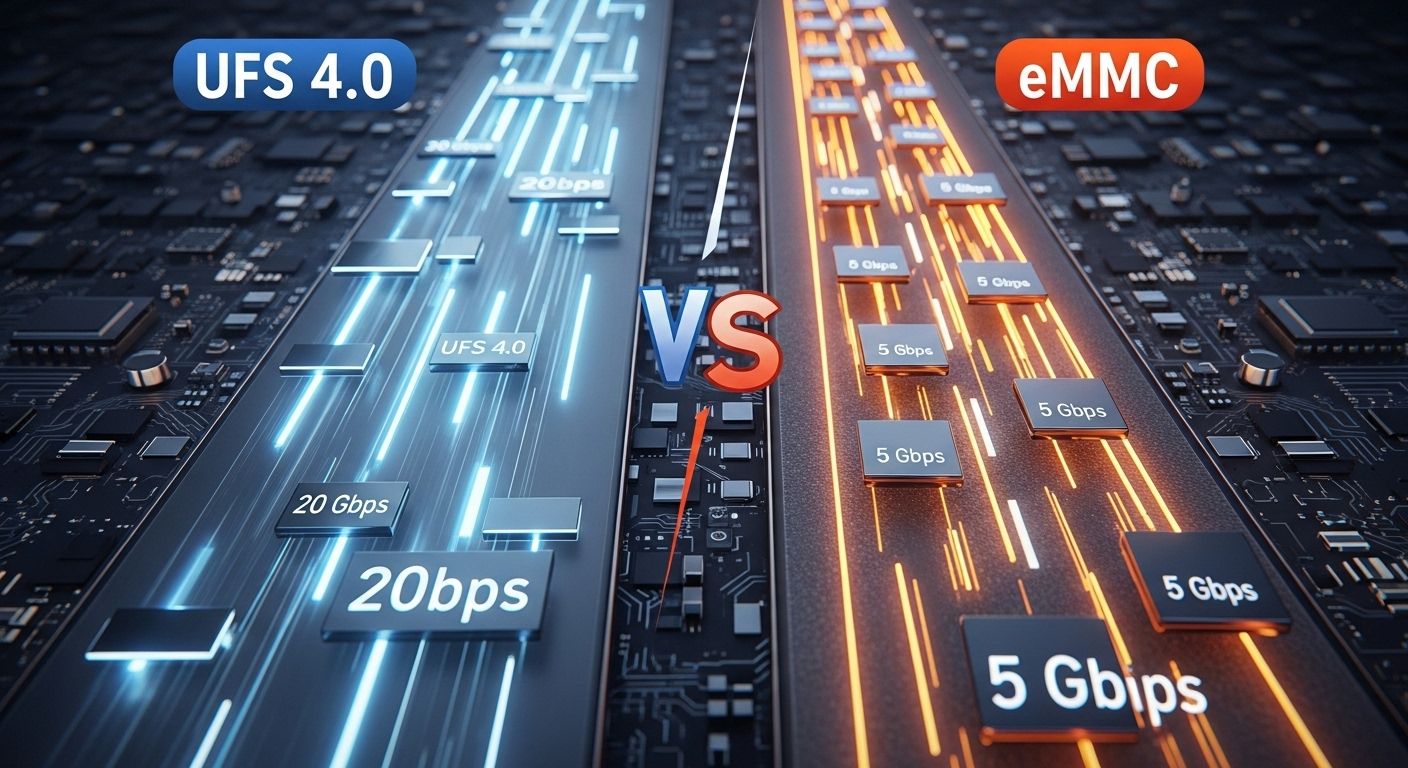 </center> Since this post is about explaining technical details as simply as possible, what we need to know here is that one memory is old technology (eMMC) and the other is more advanced (UFS). The surprising thing is that currently, phone manufacturers use old components to reduce costs and offer affordable phones to the public. When researching a phone, we should know what version of UFS its memory is. If it's higher than 4.0, its data reading speed is fast, reaching up to 20 Gigabits per second. If it's 2.0 or lower, it barely reaches about 5 Gigabits per second. This also has to do with phone heating, so aim for the fastest. >#### Almacenamiento UFS o eMMC >Como esta publicación se trata de explicarte detalles técnicos lo más sencillo posible, acá lo que tenemos que saber es que una memoria es de tecnología vieja (eMMC) y la otra mas avanzada (UFS). Lo sorprendente del caso es que actualmente las empresas que fabrican teléfonos se valen del uso de componentes viejos para reducir costos y ofrecer teléfonos económicos al público. >Al investigar sobre un teléfono debemos saber que version de UFS es su memoria, si es superior a 4.0 su lectura de datos es rápida, alcanzando velocidades de hasta 20 Gigabits por segundo, si es 2.0 o inferior alcanza apenas unos 5 Gigabits por segundo. Esto tambien tiene que ver con el calentamiento del telefono, asi que procura la mas rapida. *** #### It's the sensor, not the Megapixels that Matters <center> 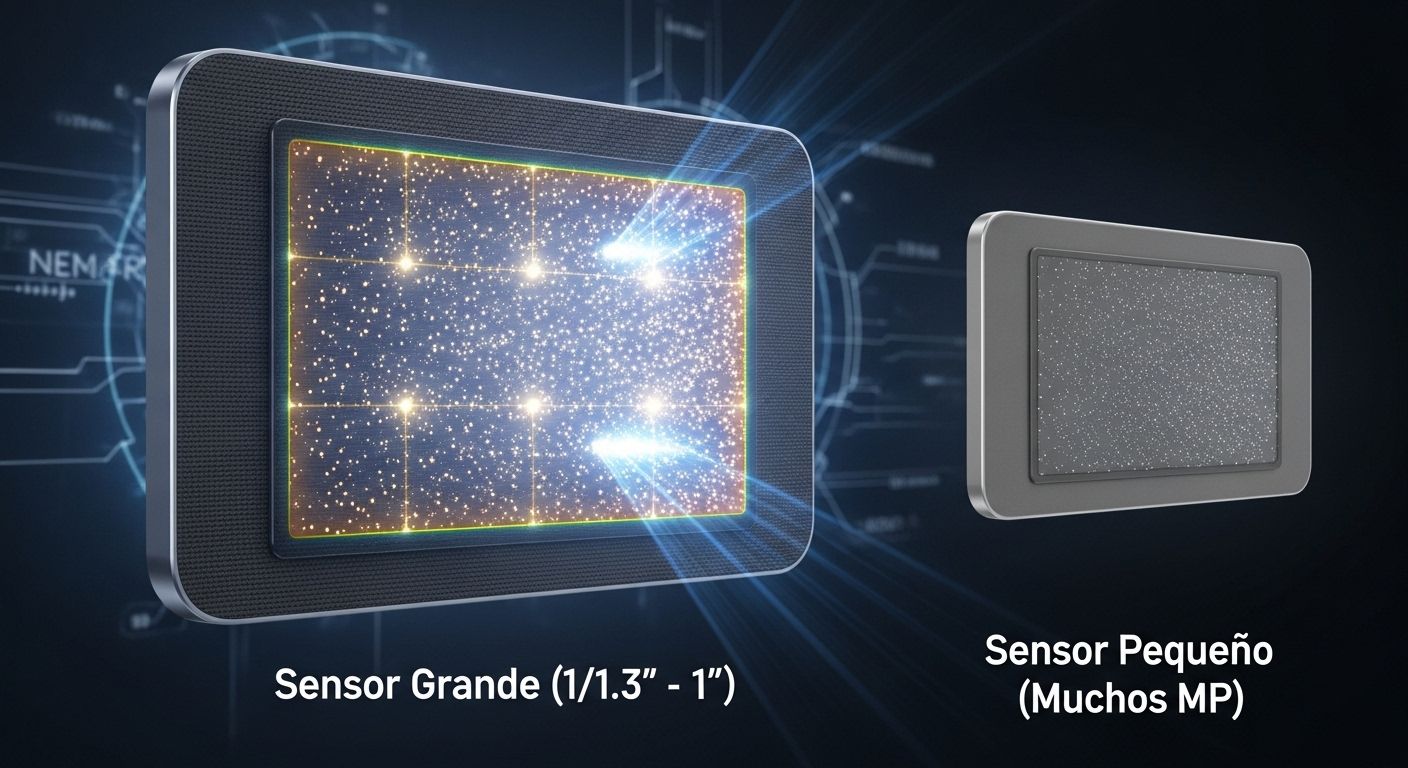 </center> Regarding the camera, there are many technical details that can be complex, but simplifying as much as I can, one of the most important aspects to consider is the sensor size. A good sensor size is between 1/1.3" and 1/1.7" in mid-range phones. The closer it gets to 1" the better, and that's what we find in high-end phones. What is this value for? The sensor size can be compared to a painter's canvas: the larger the canvas, the more space to comfortably paint details. A larger sensor captures more light, resulting in sharper images. There are phones that have many megapixels but the images look dull, which is due to a poor configuration of the sensor size with the sensor's pixel size. >#### Lo que importa es el sensor no los megapixeles >Relacionado a la cámara hay muchos detalles técnicos que pueden resultar complejos, pero simplificando lo mas que puedo, uno de los aspectos mas importantes a considerar es el tamaño del sensor. Un sensor de buen tamaño está entre 1/1.3" y 1/1.7" en teléfonos de gama media es lo que encontraremos. Entre mas se acerca a 1" mejor, y es lo que encontramos en los teléfonos de gama alta >¿Para qué sirve este valor? El tamaño del sensor se puede comparar con el lienzo de un cuadro, entre mas grande el lienzo, más espacio para pintar con comodidad los detalles. El tamaño del sensor al ser mas grande capta mas luz, por lo tanto imágenes mas nítidas. Hay teléfonos que tienen muchos megapixeles pero se ven opacas las imágenes, eso se debe a una mala configuración de tamaño del sensor con el tamaño del píxel del sensor. *** #### Display and refresh rate <center> 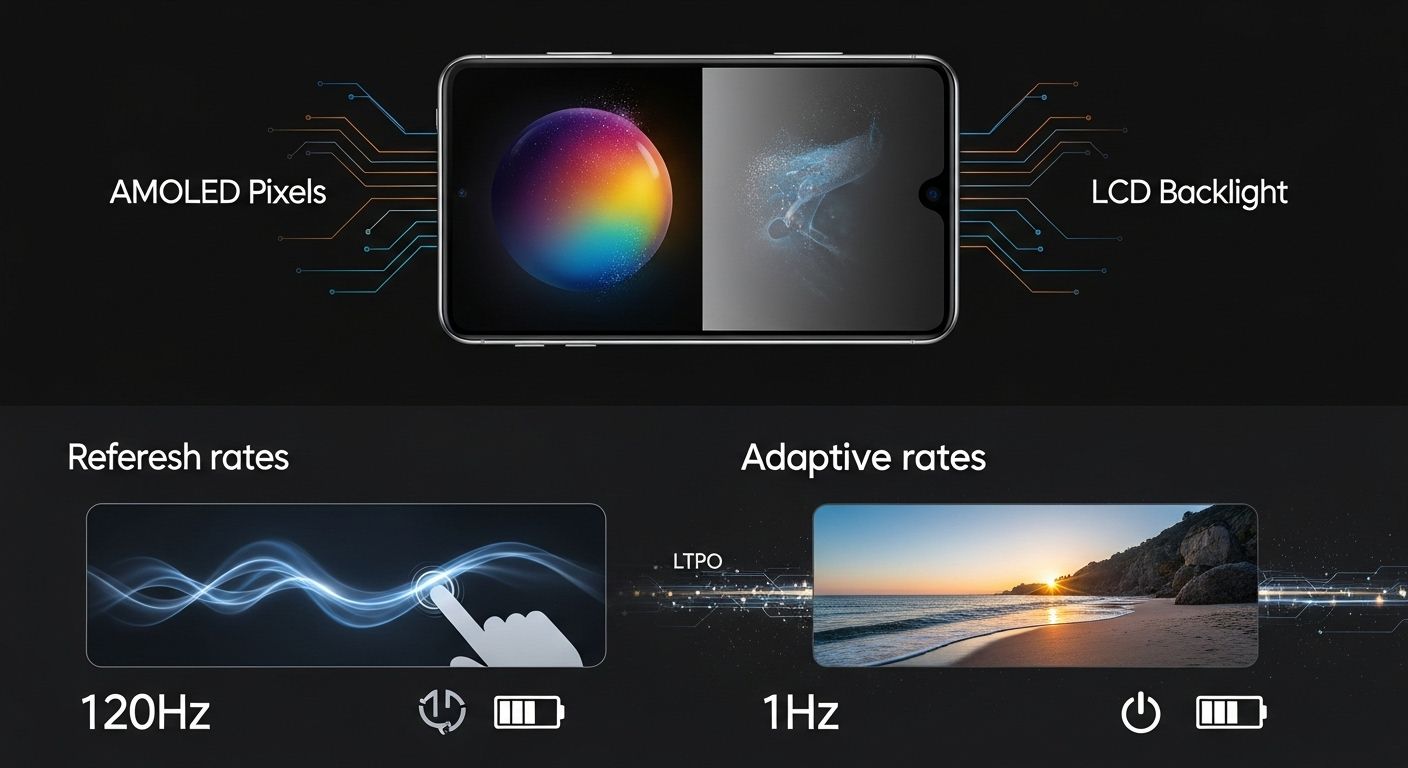 </center> You've probably read or heard about FPS, Hz, whether it's AMOLED or LCD. Well, summarizing this isn't easy, but by understanding a couple of things, you can find a phone with a good screen at a good price. AMOLED screens are better than LCDs because they have better illumination; pixels have their own light, whereas LCDs need a backlight, so an AMOLED screen is better. The refresh rate, if it's 120Hz, is better; the standard is 60 Hz. What does this mean? It refers to how many times the screen updates. If it's 120Hz, it means it updates 120 times per second, compared to 60 Hz (the traditional standard) which updates 60 times per second. Some screens feature LTPO technology, which is great because it dynamically controls the refresh rate (120Hz). For example, if you're viewing a photo, you don't need the screen to refresh 120 times every second, so LTPO technology lowers the rate to as low as 1 Hz, thus making your battery last longer. But when you switch to watching a video or playing a game, it immediately jumps to 120Hz. >#### Pantalla y tasa de refrescamiento >Seguro haz leido o escuchado de los fps, los Hz, que si es Amoled o LCD. Bueno resumir esto no es sencillo, pero con entender par de cosas puede encontrar un teléfono con una buena pantalla a buen precio. Las pantallas Amoled son mejores que las LCD, porque estas tienen mejor iluminación, los pixeles tiene luz propia en cambio las LCD necesitan luz de fondo, entonces es mejor una pantalla Amoled. >La tasa de refrescamiento si es 120Hz es mejor, lo estándar en 60 Hz ¿que significa esto? Se refiere a las veces que la pantalla se actualiza, si es 120Hz indica que se actualiza 120 veces por segundo, entonces de 60 Hz (lo tradicional) se actualiza 60 veces por segundo. >Algunas pantallas cuenta con tecnología LTPO, esto es buenisimo porque controla la tasa de refrescamiento (120Hz) variándola de forma dinámica, por ejemplo, si estás viendo una foto no necesitas que la pantalla se refresque 120 veces cada segundo, entonces la tecnología LTPO baja la tasa hasta 1 Hz y asi tu bateria dura mas, pero cuando pasas a ver un video o jugar, salta de inmediato a 120Hz. *** In summary, these are just some aspects I've learned that phone boxes don't tell you, nor do tech influencer videos on social media. If you know them, you won't fall victim to buying a phone due to trends or merely advertising, thus achieving the best price-quality ratio on your own. Here are a couple of websites I use to see these phone features in detail: >En resumen estos son solo algunos aspectos que he aprendido que no te dicen las cajas de los teléfonos, ni los videos de los influencer de tecnología en las redes sociales, que si los conoces no serás víctima de comprar un teléfono por moda o por meramente publicidad, logrando entonces por tus propios medios la mejor relación precio calidad. Aca te dejo par de sitios Webs que yo uso para ver en detalles estas características de los teléfonos que investigo: https://www.gsmarena.com/ https://phonedb.net/ *** If you are interested, you can see a summary of what has been written in the form of an infographic created by AI Gemini. >Si te interesa puedes ver el resumen de lo escrito en forma de Infografía hecha por IA Gemini https://g.co/gemini/share/19fdfd07f12b *** <sub> Imagen made with ImageFX The prompts are below </sub> >! [prompts] >"A visually striking 16:9 image representing a smartphone with transparent layers revealing intricate internal components like a tiny 4nm processor chip, fast UFS storage, and a large camera sensor. The background subtly suggests data flow or technical schematics in muted blues and greens, creating a sense of depth and technological complexity. The smartphone's design is sleek and modern, with a clean aesthetic emphasizing the sophisticated technology within. The overall theme conveys 'smart choice' or 'informed buying' for a smartphone, highlighting the advanced features and encouraging consumers to make a wise decision based on knowledge and understanding of the technology they are purchasing." <br/> >A 16:9 image illustrating smartphone processor nanometers. Show two distinct processor chips: one smaller, labeled '4nm', glowing with cool blue light, representing efficiency and low heat. The other chip is larger, labeled '6nm-10nm', emitting warm orange/red light, symbolizing inefficiency and high heat. The background should feature subtle circuit board patterns or data flow lines, emphasizing the internal workings of a phone. The overall aesthetic should be modern and clean, visually contrasting efficiency with overheating. <br/> >A 16:9 image visually contrasting fast and slow smartphone storage. On one side, represent UFS 4.0 with a sleek, futuristic data highway, showing rapid data packets flowing at high speed (e.g., 20 Gbps), with cool blue light. On the other side, depict eMMC with a congested, older-looking road, showing slow, bottlenecked data packets (e.g., 5 Gbps), with warm orange light to suggest inefficiency or heat. The background should subtly integrate circuit board lines, emphasizing the internal phone components. The overall aesthetic should be modern and clean, highlighting the speed difference. <br/> >A 16:9 image illustrating smartphone camera sensor size versus megapixels. Depict two camera sensors as painter's canvases. The first canvas is large, labeled "Sensor Grande (1/1.3" - 1")", brightly illuminated and showing vibrant, detailed light being captured, with clearly defined, efficient "pixels" (represented as glowing points). The second canvas is smaller, labeled "Sensor Pequeño (Muchos MP)", appearing duller or opaque, crowded with many tiny, less vibrant "pixels" that struggle to capture light effectively. The background should subtly feature technical schematics or light rays, emphasizing the camera's internal workings. The overall aesthetic should be modern and clean, visually contrasting superior light capture with mere pixel count. <br/> >A 16:9 image illustrating smartphone display technology. On one side, depict an AMOLED screen section showing vibrant, self-illuminated pixels with deep blacks. On the other side, show an LCD screen section with a visible backlight, resulting in less contrast. Below this, illustrate refresh rates: one section shows a smooth, fluid animation (e.g., a scrolling finger) with "120Hz" and a battery icon. Another section shows a static image (e.g., a photo) with "1Hz" and a battery icon, emphasizing power saving. Integrate subtle circuit lines and light effects to represent the LTPO technology dynamically adjusting the refresh rate. The overall aesthetic should be modern, clean, and visually highlight the benefits of AMOLED and adaptive refresh rates. <br/> </div>
👍 gunting, keithtaylor, smartvote, joeyarnoldvn, carlosmiguelfm, cocaaladioxine, gaeljosser, geadriana, dedicatedguy, valentin86, archives-upfunds, katherine-w, samantha-w, steempty, penguinpablo, cryptonized, alphacore, hungrybear, ladyaryastark, sylmarill, melodyguitar, carolinawnn, elmundodemiri, luzscarllet18, adulruna, deggial, marigerp88, palabras1, editorojo, zutodoterreno, geronimo06, palabrasportss, richardalexis, irivers, patience2, aliento, enrique89, nnnarvaez, leticiapereira, blocktrades.com, danielcarrerag, victoriabsb, antoniarhuiz, huesos, juliopalomo, abgrobert5, jacuzzi, catalellazp, genesishealthy, elizabeths14, steemlatintrail, dimeshana, hivemexico, palimanali, actioncats, syberia, hivecreators, encouragement, gaboamc2393, ferbu, ikigaidesign, subidu, xpax120, apoklipsix, erochka, liveofdalla, neruel, cryptocubangirl, noakmilo, yennysferm71, karlex77, fabiodc, alejandroloreto, theoneblog, flywithmarlin, viviana.fitness, ajolote, ricardoemt, dahpilot, moisesjohan, juliahiggs, codebydoble, henrysw, yailec, brujulamusical, aliento.love, blocktrades, alpha, clayboyn, afroadrianv, amart29, sextories, jennyzer, josuemonterola, promo-mentors, roelandp, voter002, thefoundation, voter000, fatman, therealwolf, sayee, marblely, tdas0, empo.voter, mvd, dante31, futurethinker, osarueseosato, tinyhousecryptos, winandavlogs, smartsteem, hiveonboard, mtzrene, lbi-token, ausbit.dev, nayvethleyva, khan.dayyanz, epicdice, ammy11, sarybeth, gabrielatravels, godfather.ftw, madefrance, helengutier2, karelnt, gerardosahagun, mirian-liz, poetarojo, gorayii, nodoninja, neocientiacu, mballesteros, fonestreet, podanrj, tejidorosa, thevil, mariaser, mariaogliastre, eduards1, usainvote, zvaleska, nitsuga12, holovision.stem,